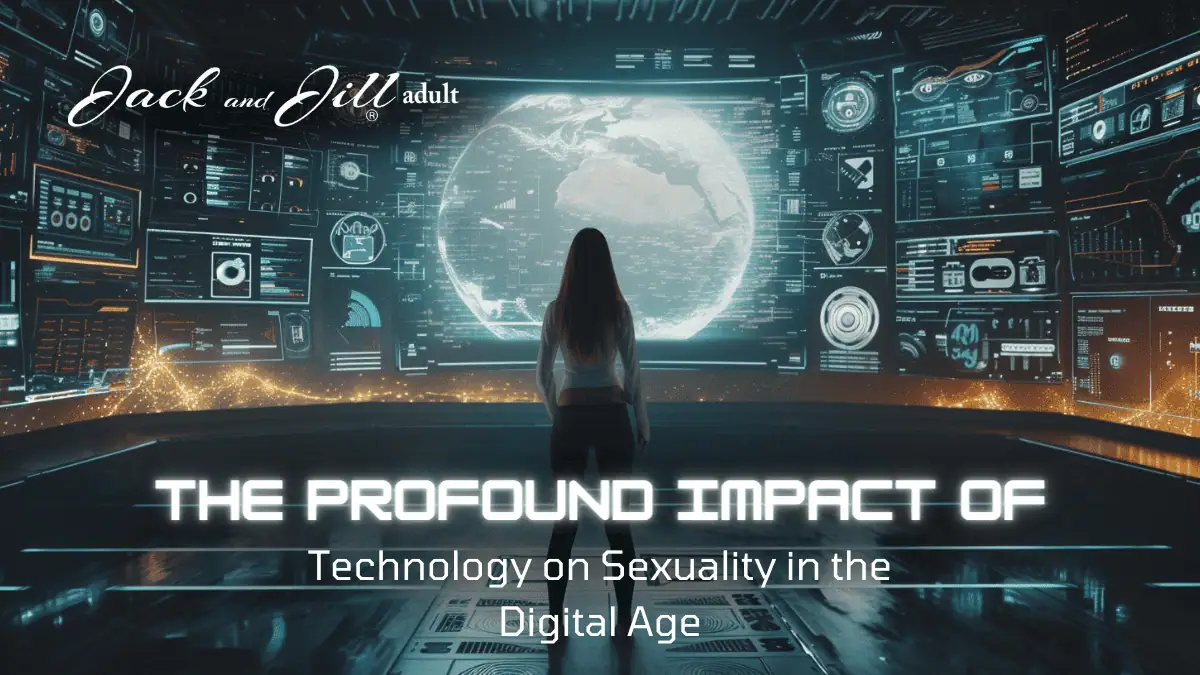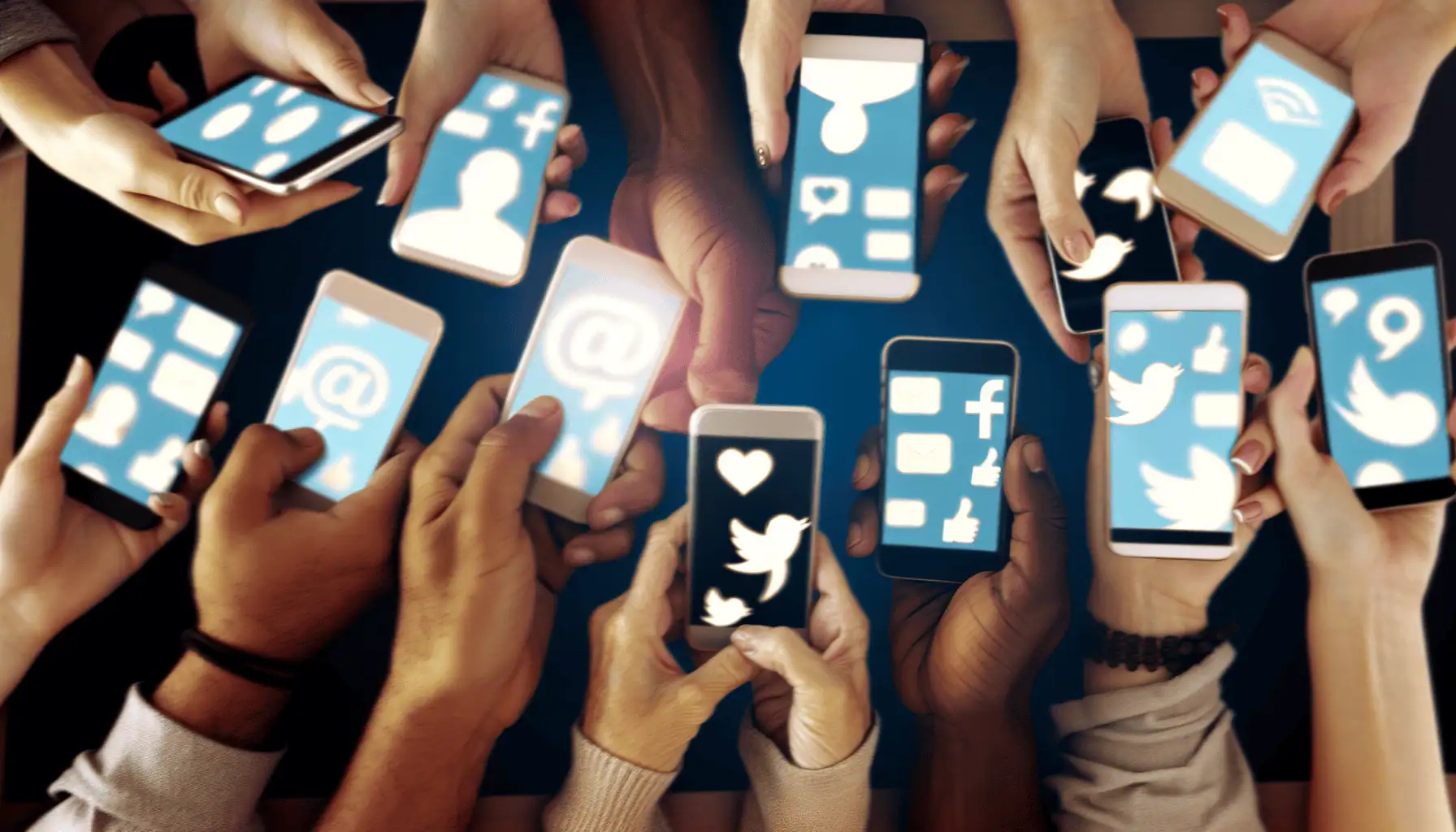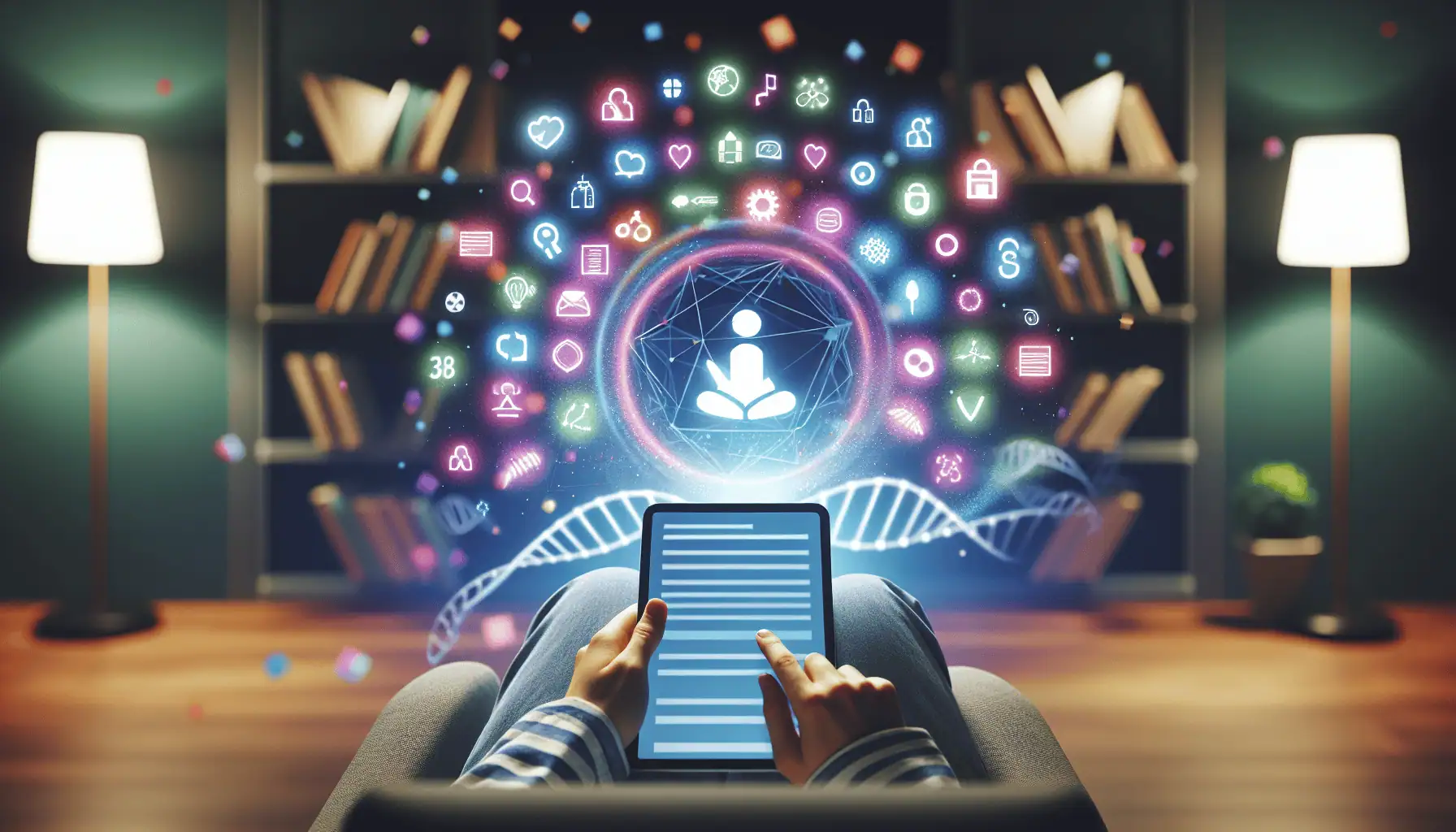
The Profound Impact of Technology on Sexuality in the Digital Age
Exploring the impact of technology on sexuality reveals a landscape where digital innovation intersects with human intimacy. Online platforms revolutionize how we date, express desires, and manage sexual health while bringing to the fore concerns over privacy, consent, and risky behaviors. This article navigates the nuances of this intersection, underscoring the significant ways technology is reshaping sexual norms and practices without overwhelming you with exhaustive details or offering sweeping judgments.
Key Takeaways
- Technological advancements have significantly influenced human sexuality, providing new avenues for sexual exploration and expression, particularly benefiting the LGBT community, while posing potential risks such as increased illegal activities and exploitation.
- Digital dating apps and platforms, in addition to virtual reality experiences, have transformed how we establish connections and intimacy, leading to both positive developments in our social interactions and challenging sociocultural implications regarding consent and privacy.
- The digital era has reshaped access to sexual content and sex education, with the rise of personalized pornography, erotic fiction, and mobile health apps, stressing the importance of addressing the accompanying ethical, legal, and health-related concerns.
The Digital Revolution in Human Sexuality

Historically, the digital revolution in human sexuality has been shaped by technological advancements and media influence, significantly contributing to the success of the sexual revolution, particularly within the LGBT community. From facilitating sexual self-expression to reshaping in-person sexual interactions, technology has offered a secure and private space for sexual exploration, enabling experimentation with different avatars and sexual preferences.
However, this digital revolution is not without its challenges. The potential for engaging in illegal sexual activities has increased, posing a serious threat to our society’s sexual well-being. But despite these dangers, technology has undeniably opened new avenues for us to explore our sexuality and has fundamentally altered our sexual scripts and behaviors in the digital age.
Online Dating Evolution
The introduction of dating apps has revolutionized the Impact of technology on sexuality the way we seek and pursue potential partners, offering convenience and accessibility like never before. With Tinder being the most widely used online dating application globally with 530 million downloads, it’s clear that these platforms have had a profound influence on our approach to dating and relationships.
Yet, this shift to digital dating has also created its own set of complexities. The rise of dating apps has not only altered the way we connect and engage with potential romantic and sexual partners but has also resulted in significant sociocultural implications for contemporary societies. In this digital era, comprehending and responsibly navigating these changes is of utmost importance.
Virtual Encounters and Intimacy
Virtual reality has the potential to augment intimacy and connection in the virtual realm, influencing the dynamics of expressing and receiving affection. Digital platforms, such as sex and dating apps, have expanded the range of opportunities for sexual encounters and simplified engagement in online sexual interactions. These platforms allow us to explore our sexual preferences and desires in a secure, private space, with the help of virtual partners.
However, the emergence of VR intimacy doesn’t signify the decline of human intimacy. In fact, it can facilitate the development of deeper connections. We should not forget that fostering emotional intimacy still demands significant face-to-face interactions. Technology, while offering novel ways to explore our sexuality, should complement, not replace, our offline interactions.
Social Media’s Influence on Sexual Expression

Social media has become a platform for viewing sexual media messages, engaging in online sexual behaviors, and expressing and exploring one’s sexual orientation. It has opened up new avenues for individuals to explore their preferences. At the same time, it has also made it easier for people to find sexual partners that align with their desires.
However, as social media facilitates conversations about consent culture, it also raises concerns about privacy and consent. Misconceptions about privacy, the possibility of encountering online predators, and the potential for cyberbullying and harassment are all real risks in the digital age. When using these platforms, we must comprehend the intricacies of these virtual realms and engage with them responsibly.
Navigating Sexual Health in the Age of Tech
Technology has undeniably enhanced the availability of sexual health information, offering a range of tools and platforms for adolescents, including male college students, to access information and support. Mobile apps, for instance, have played a significant role in facilitating the delivery of comprehensive and culturally relevant sexual education, enhancing accessibility to sexual health information rapidly and cost-effectively.
Access to Sexual Health Information

The internet provides a wealth of sexual health information, including resources on sexually transmitted infections. Websites ensure the accuracy of this information by incorporating useful and reliable information and evaluating the quality and accuracy of the content provided. This increase in digital resources has significantly improved access to sexual health information for individuals across different age groups.
However, relying solely on online sexual health information also presents potential hazards. These include the risk of encountering misinformation, challenges in effectively reaching specific demographic groups, and potential health and safety risks for some people exploring their sexuality on the internet. While exploring the digital sphere, it is vitally important to assess online information critically and rely on trusted sources.
The Role of Mobile Apps in Sexual Education
Mobile apps have shown significant effectiveness in enhancing sexual education, especially for vulnerable populations. Platforms like the RealTalk app, which enables narrative-based communication among teenagers, and the MyPEEPS Mobile app, which provides HIV prevention through interactive games, are just a few examples of how these digital tools have revolutionized sexual education.
However, the utilization of mobile apps for sexual education is not without its challenges. Privacy concerns, particularly the inherent risk associated with sharing personal data, and the potential for apps to lack comprehensive coverage of crucial topics such as puberty and sexual relationships, are issues that need to be addressed.
Risky Behaviors and Tech
Digital technology can facilitate risky sexual behaviors, including digital sexual harassment, sending unwanted sexually explicit photos or messages, and engaging in online sexual behaviors. The sharing of explicit images or videos without consent, known as revenge porn, is a particularly serious issue with legal consequences including fines exceeding $5,000, and probation for adults convicted.
Despite these challenges, tech companies are taking steps to mitigate the dissemination of harmful content and anticipate potential government regulation.
The Changing Landscape of Sexual Content
The digital age has transformed the way we consume and create sexual content. Technology has facilitated digital commercial sex services, the distribution of pornography, and the creation of engaging sexual interactions through digital media. This shift in the accessibility and dissemination of sexual content has led to significant changes in the way we experience and understand our sexuality.
However, as with any technological advancement, there are potential negative impacts. For example, exposure to pornography at a young age can increase receptiveness to coercive or violent content, and the consumption of hardcore pornography depicting abuse can influence sexual behavior and lead to problematic internet pornography use. In this evolving landscape, we need to be aware of potential risks and promote healthy, consensual sexual behaviors.
From Pornography Websites to Personalized Content
The internet has made pornography more accessible and personalized than ever before. With platforms such as:
- DTube
- Sharesome
- XVideos
- ManyVids
- Pornhub
- ExtraLunchMoney
- KinkBomb
- IWantClips
offering personalized adult content, it’s clear that the landscape of adult content has undergone substantial development.
While this newfound accessibility has allowed individuals to explore their sexual preferences and desires in a secure, private space, it also raises concerns about the potential for misuse. The advent of “revenge porn” – the unauthorized distribution of sexually explicit images or videos – is one such issue, with serious legal and emotional consequences.
The Rise of Erotic Fiction Websites
Erotic fiction websites such as Literotica and Novel Trove provide a varied selection of content designed to meet the fantasies and sexual exploration needs of their audience. Those who have visited erotic fiction websites often find that these platforms offer a more imaginative experience compared to the explicit and visual content commonly found on traditional pornographic sites.
However, as erotic fiction websites become more popular, it’s important to remember the potential risks. Like any online platform, these websites can be misused, and the explicit content they provide can potentially influence risky sexual behaviors. As we progress through the digital age, it is vital to responsibly use these platforms and critically assess the content we consume.
The Issue of Revenge Porn and Legal Ramifications
The sharing of explicit content without consent, known as revenge porn, is a significant issue with serious legal and emotional consequences. Revenge porn, or non-consensual pornography, is the unauthorized distribution of sexually explicit images or videos of an individual. Victims may suffer severe emotional repercussions similar to the trauma endured by survivors of assault, such as feelings of shame, post-traumatic stress, and various mental health challenges.
While revenge porn laws have proven to be effective in facilitating successful prosecutions, it’s important to remember that the best prevention is education and awareness. As we continue our journey through the digital age, understanding the legal and emotional repercussions of non-consensual content sharing and promoting a culture of respect and consent in all interactions is crucial.
Real Connections vs. Digital Interactions

The digital age has changed the way we form and maintain relationships. While technology has made it easier for us to connect with others, it has also affected the quality of our interactions and our ability to build deep, meaningful connections. As technology becomes more intertwined with our daily lives, balancing online interactions with offline, in-person connections is crucial.
However, it’s not all bad news. By establishing boundaries and fostering open communication, couples can utilize technology to improve their relationships. Technology has the potential to facilitate emotional intimacy, but it’s important to remember that genuine intimacy requires more than just a digital connection.
Facilitating Emotional Intimacy or Creating Barriers?
Technology can help people connect and maintain long-distance relationships, but it can also lead to superficial connections and a lack of genuine intimacy. The reliance on technology in relationships can potentially lead to:
- Superficial connections by adversely affecting social skills
- Fostering a lack of in-person communication
- Reducing the emphasis on real-life interactions
Yet, technology can also be a powerful tool for fostering emotional intimacy. By participating in sincere conversations, setting boundaries, and organizing virtual dates, we can uphold authentic intimacy in our relationships during the digital era.
Offline Interactions in the Digital Era
As technology becomes more integrated into our lives, it’s important to balance digital interactions with face-to-face connections to maintain healthy relationships. Research has shown that digital interactions can have adverse effects on face-to-face communication, leading to reduced closeness, connection, and conversation quality.
However, offline interactions also provide distinct advantages, including enhanced quality of communication and the opportunity to disengage from technology. By using technology to facilitate, rather than replace, our offline interactions, we can maintain and foster deep, meaningful connections in the digital era.
Sexuality Education and the Digital Platform
Sex education must adapt to the digital age, integrating technology, and addressing the unique challenges it presents. Digital platforms, including online sites and mobile phone applications, can serve as effective tools for promoting sexual health education. These platforms offer features for health tracking, particularly in the realm of sexual and reproductive health.
However, as sex education becomes more integrated with technology, it’s important to address the potential risks. The digital age presents new risks, such as:
- the spread of misinformation and harmful stereotypes through online platforms
- the potential for online harassment and cyberbullying related to sexual topics
As we continue to explore the digital landscape, sex education must evolve to tackle these challenges.
Updating Sex Education for the Digital Age
Sex education, which includes sexual knowledge, should incorporate discussions about technology, online safety, and digital consent to better prepare youth for the realities of the digital world. The instruction of digital consent in sex education should emphasize guiding students to demonstrate respect, comprehend boundaries, and prioritize consent in sexual relationships.
However, integrating online safety into sex education presents its own challenges. It’s important to separate consent from the subject of sex and educate about physical boundaries before discussing sexual activity. As we advance in the digital age, it’s vital that sex education evolves to confront these challenges.
The Future of Sex Tech
As technology continues to advance, it will have an even greater impact on sexuality, presenting both opportunities and challenges. Anticipated upcoming innovations in sexual technology include:
- Advances in sensors
- Sustainability technology
- Virtual reality
- Teledildonics
- Biometric feedback
- Robotics
- AI
These innovations have the potential to transform the experience of pleasure and enhance sexual experiences.
However, as technology becomes more integrated into our sexual experiences, it also raises ethical concerns, privacy issues, and the possibility of impacting interpersonal relationships. Looking ahead, it’s essential for researchers and public health professionals to comprehend these advancements’ impact and devise strategies to encourage healthy sexual behaviors in the digital era.
Innovations on the Horizon
Emerging technologies like teledildonics and virtual reality have the potential to revolutionize the way we experience sexuality. Innovations in sex tech have been discovered to:
- Facilitate sexual and emotional connections
- Enhance sexual health knowledge
- Promote safer sex
- Positively influence sexual behavior
Yet, as these technologies become more prevalent, it’s important to remember the potential risks. The use of AI in sex technology, for instance, raises ethical concerns and potential privacy issues.
As we progress in the digital age, it’s vital to responsibly use these technologies and critically assess their potential impacts.
Research and Public Health Implications
As technology continues to shape our sexual experiences, it’s crucial for researchers and public health professionals to understand its impact. Recent research has revealed that technology can have both favorable and adverse effects on sexual behavior. For example, technological platforms can provide education to marginalized populations and expand public health surveillance for monitoring overall well-being.
However, the digital age also presents new challenges. Prolonged exposure to distressing news and the tendency to compare our lives to meticulously constructed social media content can contribute to feelings of anxiety and stress. As we advance in the digital age, understanding these potential risks and formulating strategies to encourage healthy sexual behaviors is crucial.
Summary
The digital age has had a profound impact on our approach to sexuality and relationships. From the rise of online dating platforms and virtual reality encounters to the role of social media in sexual expression, technology has fundamentally altered our sexual landscape. However, as we embrace these developments, it’s crucial to balance our online interactions with offline, face-to-face connections, and remember that genuine intimacy requires more than just a digital connection.
As technology continues to advance, it will undoubtedly continue to shape our sexual experiences, presenting both opportunities and challenges. It’s crucial for researchers and public health professionals to understand the impact of these advancements and develop strategies to promote healthy sexual behaviors in the digital age. As we continue to navigate this digital revolution, let’s ensure we do so with responsibility, respect, and a commitment to promoting healthy, consensual sexual behaviors.
Frequently Asked Questions
What impact does the media have on my sexuality?
The media has an impact on sexuality as it influences public and personal agendas, reinforces sexual and relationship norms, and often fails to depict responsible models. These factors can shape perceptions and behaviors regarding sexuality.
How are youth using technology to explore sexuality today?
Today, many young people are using technology, such as dating websites and apps, to explore their sexuality. This is evident in the high percentage of youths, particularly LGBT individuals, who report using such platforms for finding potential partners.
What are the negative effects of social media on sexuality?
Exposure to explicit sexual media at a young age can have harmful effects on adolescents, including encouraging risky sexual behavior and increasing the rates of STIs and unintended pregnancy. Therefore, it is important to be mindful of the negative impact of sexual media on young people.
What are the 5 factors affecting human sexuality?
Factors affecting human sexuality include cultural, political, legal, philosophical, moral, ethical, and religious aspects, alongside age, gender, marital status, race, disability, and sexually transmitted infections. These factors shape attitudes towards sex and sexual self-concept.

